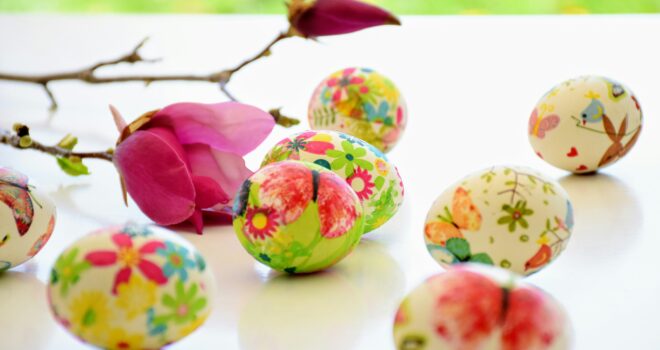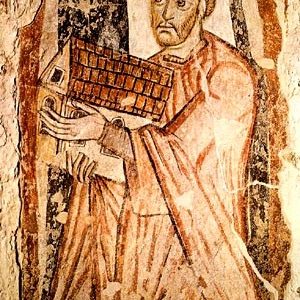The universal celebration of Easter Sunday generally includes attending church, gathering the family for a meal, and of course the Easter egg hunt. Have you ever asked yourself what eggs have to do with Easter?
Surprisingly, eggs do hold Christian significance.
Eggs represent new life and fertility. Understandably, come springtime, birds lay eggs and new life emerges from them. According to The Easter Book by Francis X. Weiser, S.J., “[t]he origin of the Easter egg is based on the fertility lore of the Indo-European races. To our pre-Christian ancestors, it was a most startling event to see a new and live creature emerge from a seemingly dead object. The egg, to them, became a symbol of spring” (Weiser, 1954).
However, to infuse this representation of new life with Christian significance, throughout history, Christians came to view the Easter egg as a symbol of the empty tomb from which Jesus Christ was resurrected. New life, victorious over death, rose from the tomb, and similarly, the egg, the symbol of springtime and new life, was colored with this understanding of new spiritual life as well. According to some accounts, boiling Easter eggs represents the sealing of the tomb, and cracking the boiled eggs open represents Christ’s victory over death and His emergence from the tomb. This explains why some call Easter eggs “resurrection” eggs. (“Easter Symbols,” 2024)
To provide further historical context, in centuries past, early Christians not only gave up meat during Lent, but they also gave up eggs. When Easter Sunday arrived after such a lengthy abstinence, they indulged in consuming both meat and eggs. Many celebrated by staining the eggs with plain vegetable dye colors and decorating them with elegant designs and symbols. The decorating of the eggs was a means by which Christians marked the end of the Lenten period of fasting and abstaining with celebration and beauty. (“Easter Symbols,” 2024)
Apparently, this tradition of coloring eggs may originate from a legend from the Resurrection story itself. It has been said that when Mary Magdalene visited Christ’s tomb on Easter morning, she was carrying with her a basket of eggs. Upon arriving at the tomb, the eggs turned red! Another version of this story reports that Mary Magdalene approached the emperor in Rome with an egg in hand to declare the Resurrection of the Lord, utilizing the symbol of new life emerging from a seemingly “dead” egg. The emperor dismissed her saying that Jesus could not have risen from the dead any more than the egg in her hand could turn red. Immediately, the egg turned red, and the emperor was shocked. These traditions explain why there are icons that depict the Magdalene holding a red egg. (Filz, 2017)
According to author Catherine Boeckmann in an article for the Almanac, “among Orthodox Christians, the faithful present each other with crimson eggs in honor of the blood of Christ. In parts of Eastern Europe, it’s tradition to create intricate designs on the egg with wax or twine before coloring,” she wrote. “Called pysanki, these special eggs are saved from year to year like symbolic heirlooms and can be seen seasonally in Ukrainian shops. In Germany and other countries, the eggs are pierced and made hollow so that they can be suspended from shrubs and trees during Easter Week—much like decorations on a Christmas tree” (Boeckmann, 2024).
What a beautiful thing it is to celebrate the new life won for us by Christ with symbols, beauty, colors, and good food! I hope your Easter traditions are “colored” with a bit more excitement and significance given the religious and historical context of these stories.
Photo by Boba Jaglicic on Unsplash
Weiser, F.X. (1954). The Easter Book. St. Augustine Academy Press.
Filz, G. (2017, April 5). The Story of Mary Magdalene and the First Easter Egg. The Catholic Company. https://www.catholiccompany.com/magazine/mary-magdalene-first-easter-egg-6029.
Boeckmann, C. (2024, March 21). Who is the Easter Bunny? Why Do We Dye Eggs? The Surprising Origins of Easter Traditions. Almanac. https://www.almanac.com/easter-symbols.
Easter Symbols and Traditions. (2024, March 19). History. https://www.history.com/topics/holidays/easter-symbols.










